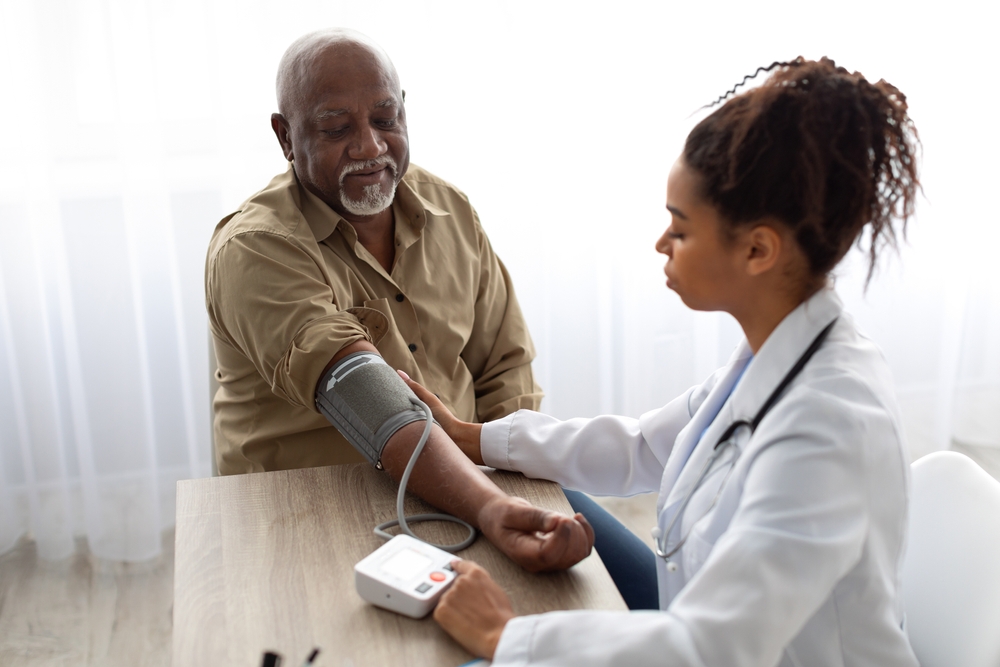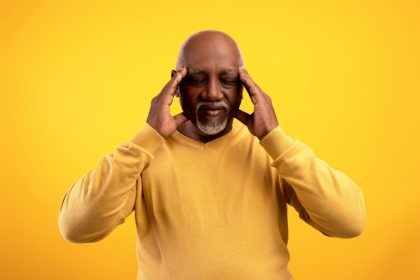High blood pressure earns its reputation as the “silent killer” by developing without obvious symptoms until it reaches potentially life-threatening levels. With nearly half of American adults living with hypertension, recognizing the warning signs of dangerously elevated blood pressure has become increasingly important for public health.
While routine blood pressure checks remain the most reliable method for monitoring hypertension, certain warning signs may indicate your blood pressure has reached critically high levels requiring immediate medical attention. Understanding these symptoms could mean the difference between effective management and severe health consequences.
1. Persistent, unusual headaches
These aren’t your typical tension headaches that respond to over-the-counter pain relievers. When blood pressure reaches dangerous levels, it can trigger distinct headache patterns that signal something more serious is happening.
High blood pressure headaches typically feel different from ordinary headaches. Many people experience a throbbing sensation, particularly in the morning, that conventional painkillers can’t touch.
These headaches occur because elevated blood pressure forces blood vessels in the brain to constrict abnormally, creating intense pressure. The pain commonly manifests as throbbing sensation across the forehead, pressure behind the eyes that worsens with movement, temple pain that persists throughout the day, occipital discomfort that radiates down the neck, and pain that intensifies with physical activity.
While not everyone with hypertension experiences headaches, their sudden appearance—especially when combined with other symptoms—warrants prompt medical evaluation. These headaches typically persist despite normal remedies and may actually worsen when bending over or during physical exertion.
2. Vision disturbances
The eyes contain delicate blood vessels that suffer damage quickly when blood pressure reaches dangerous levels. This damage, known as hypertensive retinopathy, produces noticeable visual disturbances that serve as important warning signs.
The eyes offer a unique window into vascular health. Changes in vision sometimes provide the first indication that blood pressure has reached critical levels.
People experiencing dangerous blood pressure elevations may notice sudden blurring or double vision that comes and goes, dark spots or floaters that weren’t previously present, temporary vision loss in one or both eyes, halos around lights especially at night, difficulty focusing on nearby objects, and increased sensitivity to bright lights.
These vision changes often develop gradually but can suddenly worsen during blood pressure spikes. Because the retinal blood vessels mirror those in other crucial organs, damage visible in the eyes often indicates similar damage occurring elsewhere in the body, particularly in the brain and kidneys.
3. Cardiovascular warning signs
The heart bears the primary burden of high blood pressure, leading to noticeable symptoms when the pressure reaches dangerous levels. These cardiovascular signs often indicate advanced stages of hypertension requiring immediate medical attention.
Chest discomfort represents one of the most serious warning signs. This discomfort varies widely between individuals but commonly includes pressure or squeezing sensations in the center of the chest, pain that radiates to the shoulders, neck, jaw, or arms, persistent ache that worsens with physical activity, and sensation of heaviness that doesn’t resolve with rest.
Equally concerning are irregularities in heart rhythm, which many describe as fluttering sensations in the chest, racing heartbeat that persists even during rest, feeling of missed or extra heartbeats, and pounding pulse that becomes noticeable at night.
These symptoms indicate the heart is working harder than necessary against elevated pressure in the arteries. Over time, this extra workload causes structural changes to the heart, making it less efficient at pumping blood throughout the body and increasing the risk of heart attack, heart failure, and stroke.
4. Neurological symptoms
The brain requires consistent blood flow to function properly, making it particularly vulnerable to the effects of dangerous blood pressure levels. When blood pressure reaches crisis levels, several neurological symptoms may emerge.
Many patients report unexpected dizziness, especially when changing positions, sudden confusion or difficulty with basic cognitive tasks, persistent ringing in the ears (tinnitus), balance problems or coordination difficulties, and extreme fatigue that doesn’t improve with rest.
These neurological symptoms represent the brain’s distress signals. They indicate blood vessels are under extreme pressure, potentially leading to life-threatening complications if not addressed immediately.
Perhaps most concerning is the sensation of impending faintness that doesn’t resolve with sitting or lying down. This symptom often precedes actual fainting episodes and signals significantly compromised blood flow to the brain.
5. Respiratory distress
When dangerous blood pressure levels affect heart function, respiratory symptoms often follow. These breathing difficulties typically worsen during physical activity but may eventually occur even at rest.
Many people experience shortness of breath during mild exertion, sensation of chest tightness with activity, unexplained dry and persistent cough, difficulty breathing while lying flat, and gasping or choking sensations at night.
Breathing problems related to hypertension develop when elevated pressure forces fluid into the lungs. This fluid accumulation, called pulmonary edema, represents a medical emergency requiring immediate treatment.
Many individuals report needing multiple pillows to sleep comfortably or feeling suddenly breathless when lying down. These symptoms often indicate that high blood pressure has begun affecting heart function, potentially leading to heart failure if left untreated.
When to seek emergency care
While regular blood pressure monitoring remains essential for anyone with hypertension or risk factors, certain symptoms demand immediate emergency attention. Medical experts recommend calling 911 or going directly to an emergency department if you experience severe headache with chest pain, vision changes, or breathing difficulties, blood pressure readings above 180/120 mm Hg, sudden confusion, slurred speech, or facial drooping, chest pain with nausea and sweating, or severe shortness of breath.
These symptoms represent a hypertensive emergency. Waiting even a few hours for treatment could result in permanent organ damage or death.
Prevention and management strategies
For those diagnosed with high blood pressure or at risk for developing it, several evidence-based strategies help maintain healthy levels and prevent dangerous spikes.
The DASH (Dietary Approaches to Stop Hypertension) eating plan has demonstrated significant benefits for blood pressure management. This approach emphasizes increasing potassium-rich foods like bananas, sweet potatoes, and leafy greens, choosing magnesium and fiber-rich options such as whole grains and legumes, limiting sodium intake to less than 2,300 mg daily, incorporating heart-healthy fats from sources like olive oil and avocados, and reducing processed food consumption.
Regular exercise plays a crucial role in blood pressure control. Health organizations recommend at least 150 minutes of moderate-intensity activity weekly, strength training two or more days per week, breaking up sedentary time with movement throughout the day, and starting slowly and gradually increasing intensity for those new to exercise.
Keeping track of blood pressure remains essential for early detection of dangerous levels. Effective monitoring includes regular home blood pressure checks at the same time each day, keeping a log of readings to share with healthcare providers, learning proper measurement techniques for accurate readings, understanding your personal target blood pressure range, and recognizing when readings require medical attention.
For those prescribed blood pressure medications, consistent use according to medical directions provides crucial protection against dangerous spikes. Many hypertensive emergencies occur when patients skip medications or take them irregularly. Even missing a single day can sometimes trigger dangerous blood pressure elevations in certain patients.
High blood pressure remains a leading cause of preventable death worldwide, but recognizing these warning signs enables life-saving intervention before permanent damage occurs. By understanding these symptoms and responding promptly when they appear, you can protect yourself and loved ones from the silent but deadly effects of uncontrolled hypertension.












